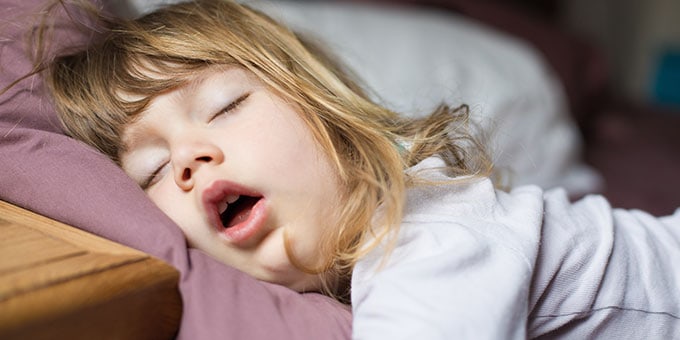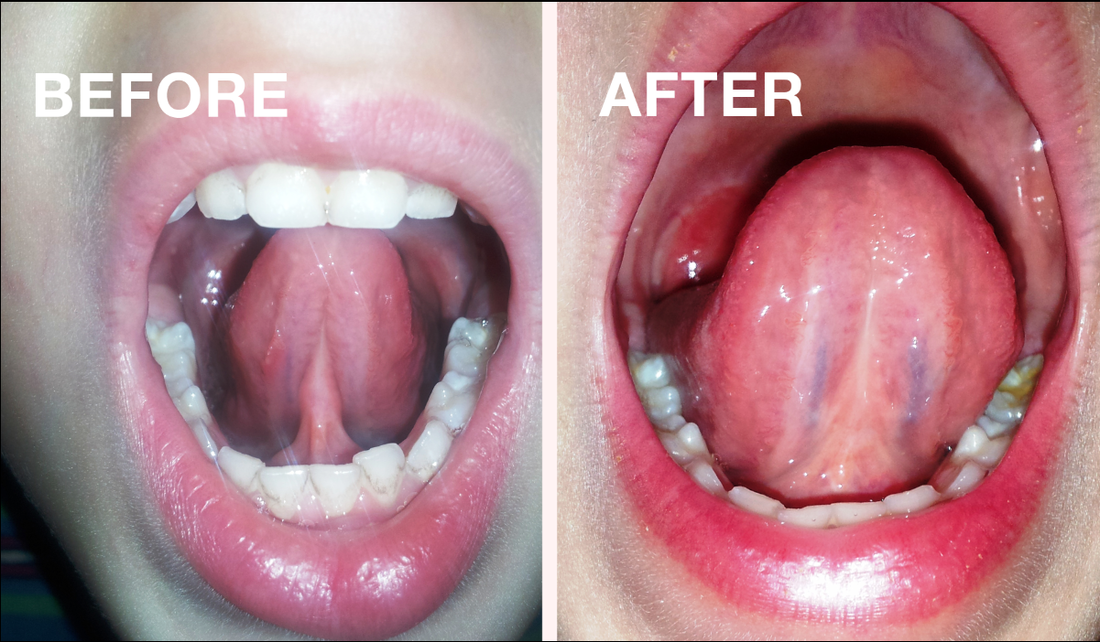If your child is suffering from mouth breathing and pediatric sleep apnea, we have a cure. The treatment for pediatric sleep apnea is to correct the root cause of the problem which is a small obstructed mouth, airway and nasal passageways. Our advanced treatments use specialized orthodontic appliances to increase the space in the mouth, nose and throat to allow for better oxygenation during the day and at night during sleep. By creating more space for airflow and oxygenation, the root cause of kids sleep apnea can be corrected naturally without surgery.

Sleep disorders in children, including sleep apnea, mouth breathing, and night terrors, can profoundly impact their development, behavior, and overall quality of life. The TMJ Sleep and Breathe Center in Vienna Virginia is dedicated to identifying and treating these conditions. We use advanced techniques and therapies to ensure your child achieves a restful, healthy sleep. This comprehensive guide outlines our approach, focusing on palatal expanders, laser frenectomies for tethered oral tissues (TOTs), and myofunctional therapy. The result is truly transformative and addresses the root cause of the obstructive problem.
Why settle for CPAP and unnecessary surgeries such as removal of tonsils and adenoids when a truly natural solution to the cause of the problem is available?
We also offer sleep apnea appliances for adults including the DNA Appliance and other Vivos Devices.
Protocol to Fix Pediatric Sleep Apnea and Mouth Breathing
How we correct the underlying cause of sleep apnea in children. We correct hundreds of airway and sleep apnea problems in children every year. The treatments focus on:
- Correcting tongue posture, so it does not obstruct the airway during sleep
- Increase the size of the mouth and nasal passageway to improve airflow through the entire airway.
- Myofunctional Therapy to correct the function of the tongue and facial muscles.
- Breathing exercises to strengthen the diaphragm in correct breathing muscle patterns.
The Critical Role of Palatal Expanders in Pediatric Sleep Apnea
Palatal expanders are devices designed to widen the upper jaw, thereby increasing the size of the mouth and nasal passageways. This widening can have a significant impact on a child’s breathing during sleep, addressing one of the primary physical constraints associated with pediatric sleep apnea. Dental expanders can be designed in many different ways. Expanders can increase nasal breathing by 50%. Nose breathing is one of the primary ways to stop mouth breathing and prevent airway collapse during sleep.
Some of the most popular expanders we use for kids are
How to Cure Sleep Apnea in Children Video
Tethered Oral Tissues, such as tongue ties, lip ties, and buccal ties, can restrict the movement of facial muscles and the tongue and contribute to breathing and feeding problems, which, in turn, exacerbate sleep apnea symptoms in children.

CO2 Laser Frenectomies for Release of Tongue and Lip Ties
Our practice performs laser frenectomy procedures to precisely release TOTs. This minimally invasive procedure releases the ties, significantly improving the child’s ability to breathe, eat, and speak more comfortably. The use of lasers ensures a quick, relatively painless procedure with minimal bleeding and faster healing times.
Myofunctional Therapy: Tongue Exercises for Sleep Apnea
Myofunctional therapy focuses on strengthening the tongue and other mouth muscles. This therapy teaches children how to properly use these muscles, promoting healthier breathing patterns and correcting mouth breathing, which is often linked to sleep apnea
Beyond immediate improvements in sleep quality, myofunctional therapy offers long-term benefits, including enhanced oral hygiene, better chewing and swallowing functions, and even improvements in speech.
Pediatric Sleep Apnea Treatment Case Studies:
To illustrate the effectiveness of our treatments, let’s explore a few success stories (details modified for privacy):
- Case Study 1: A 7-year-old with severe night terrors and diagnosed with mild sleep apnea showed remarkable improvement after treatment with a palatal expander and myofunctional therapy, experiencing less mouth breathing, less teeth clenching and deeper sleep.
- Case Study 2: An 8-year-old diagnosed with tongue tie received a tongue tie release procedure with a Lightscalpel CO2 laser, and myofunctional therapy. Post-treatment, the child’s snoring and mouth breathing decreased, and episodes of apnea, bed wetting and night terrors were significantly reduced.
These cases exemplify the impact of treatments at the TMJ Sleep and Breathe Center
Why Choose Us for Your Child’s Sleep Treatment
The TMJ Sleep and Breathe Center stands at the forefront of treating pediatric sleep disorders with a holistic and innovative approach. We understand the crucial link between oral health and sleep quality and are committed to providing the highest standard of care. Our team is trained in the latest corrective techniques to ensure your child receives the best possible treatment in a compassionate, understanding environment. Our therapies fix the root cause of airway problems and sleep apnea.
Frequently Asked Questions
What are some common symptoms of pediatric obstructive sleep apnea?
Common symptoms of pediatric obstructive sleep apnea include snoring interrupted by pauses, shallow breathing, very restless sleep, increased sweating, and bedwetting. These signs may indicate the presence of the condition.
What are the consequences of untreated pediatric sleep apnea?
Untreated pediatric sleep apnea can lead to serious health issues such as failure to thrive, high blood pressure, and behavioral problems due to poor sleep quality. It’s important to seek treatment to avoid these consequences.
Untreated pediatric sleep apnea can lead to serious health issues such as failure to thrive, high blood pressure, and behavioral problems due to poor sleep quality. It’s important to seek treatment to avoid these consequences.
Some causes and risk factors of pediatric sleep apnea include enlarged tonsils and adenoids, partial narrowing of the airway, obesity, and certain neuromuscular disorders or birth defects affecting facial structure and muscle function. These factors can contribute to the development of sleep apnea in children.
What are some treatment options for pediatric sleep apnea?
Treatment options for pediatric sleep apnea include surgical interventions like adenotonsillectomy, non-surgical therapies like oral appliances and CPAP machines, as well as lifestyle changes such as weight loss and a healthy diet. These options aim to improve breathing during sleep and alleviate symptoms.
How can dentists assist in managing pediatric sleep apnea?
Dentists can assist in managing pediatric sleep apnea by identifying symptoms, referring patients for assessment, and providing oral appliances to help manage the condition. It’s an essential role in ensuring comprehensive care for pediatric patients with sleep apnea.
 703-712-1053
703-712-1053 